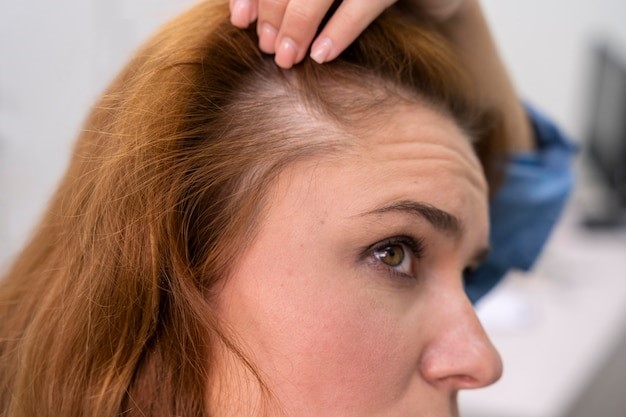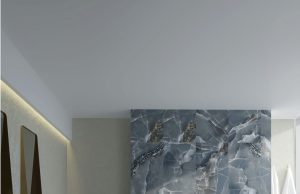
Moderate hair loss is a natural physiological process. Usually, a person loses about 100 hairs daily and may not even notice it. The life cycle of a hair consists of periods that change asynchronously, so a small percentage of hair falls out simultaneously. They gradually leave the scalp, and in their place, new hairs begin to grow.
As a rule, the reason for concern in patients are:
- Increased hair loss in any period
- Visual widening of the parting,
- The translucence of the scalp through the hair,
- The absence of hair in any area,
- Thinning, baldness, and complete hair loss on the head and other body parts.
How to diagnose hair loss problems on your own?
Patients can independently check whether the prolapse is pathological. To do this, you must:
1. Remember what happened a few months ago? Whether there was severe stress or fever or the patient was taking any medications or dietary supplements.
2. Analyze how long active hair loss started. Whether this period exceeds 3-4 months.
3. Take a small strand of hair (about 50-100 hairs) in the temples, pass it between your fingers and pull it slightly to the side. Then do the same with the strand in the crown area.
If, after such a test, there are more than 5-7 lost hairs in the hands, then there is a problem.
4. Collect your hair and pay attention to the condition of the time zones (significant for men and women in menopause). If there are bitemporal receding hairlines (on the temples), then, most likely, there is a problem.
5. For men, compare the density of hair on different areas of the head. If there are areas where there is much less hair, then the condition is considered pathological.
6. For women, divide the hair on your head into two parts and evaluate the resulting parting. If it expands a lot as it approaches the forehead, then most likely, there is a problem.
7. To get the proper hair diagnosis guideline, you can get help from a hair loss consultation London.
Laboratory Diagnostics
- If necessary, a clinical and biochemical blood test is performed: ALT, AST, total protein, bilirubin, cholesterol, blood sugar, and alkaline phosphatase are checked.
- Often it is necessary to exclude iron deficiency conditions. For this purpose, hemoglobin, ferritin, transferrin, and blood serum’s total iron binding capacity are determined.
- Sometimes it is necessary to determine the level of thyroid-stimulating hormone (TSH), triiodothyronine (T3), and thyroxine (T4). And their free fractions and antibodies to thyroid structures.
- If the patient has additional complaints, a dermatologist may prescribe other tests. Such as sex hormone levels, DNA antibodies, and antinuclear antibodies rule out lupus erythematosus.
A dermatologist can perform a histological examination for differential diagnosis. And diagnosis in diagnostically tricky cases.
Hair Loss Treatment
The choice of treatment tactics for hair loss depends on the type and activity of the process. There are temporary factors; after the termination of their impact, hair growth resumes in the
same volume. Other factors require correction and treatment, and the earlier therapy is initiated, those factors will involve fewer hair follicles in the pathological process.
Drug Treatment
To treat hair problems, use:
- Androgen metabolism inhibitors are first-line medications for the treatment of androgenetic alopecia.
- Growth factor stimulators. Minoxidil is the only substance from this group. It is successfully used to correct androgenetic alopecia. It is necessary to use the drug for at least 9- months to achieve a visible effect. But after the cancellation, the hair starts to fall out again.
- Hormonal and nonhormonal antiandrogenic drugs.
- Glucocorticosteroids. They are successfully used for the treatment of alopecia areata.
- Antimetabolites and immunosuppressants for the treatment of common forms of alopecia areata.
- In special cases, biologics such as Janus kinase inhibitors may be used.
- PRP (plated-rich plasma): Platelet-rich plasma. The technique consists of using platelet-rich blood plasma. To do this, the patient's blood is placed in a special tube and centrifuged. As a result, a layer rich in platelets and growth factors that stimulate tissue repair in the body is separated. The resulting solution is administered intradermally or subcutaneously.
- Mesotherapy: The method is based on the introduction of various drugs intradermally. The effectiveness is based on a combination of reflexogenic actions from the injections. And also from the drug’s pharmacological activity.
Surgical treatment
In addition to therapeutic methods, surgical methods are also used — autotransplantation of hair follicles from areas where the hair growth and quality are not disturbed. The disadvantage of this method is the non-guaranteed survival rate of follicles in new places. For surgical treatment of hair loss, it will be best to consult with a hair loss clinic London.
Physical therapy treatment
Physiotherapy methods are used as part of the complex therapy of alopecia. These include cryo massage, darsonvalization, PUVA therapy, electroplating, electrophoresis, and light therapy. However, reliable scientific data proving the effectiveness of these methods are still insufficient.
Final Verdict
Hair loss problems are common worldwide: according to statistics, about 60-70% of men and 25-40% of women suffer from some form of hair loss. 8% of all calls to dermatologists and trichologists are for hair diseases.












